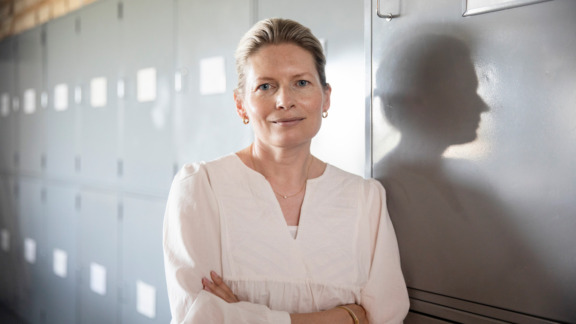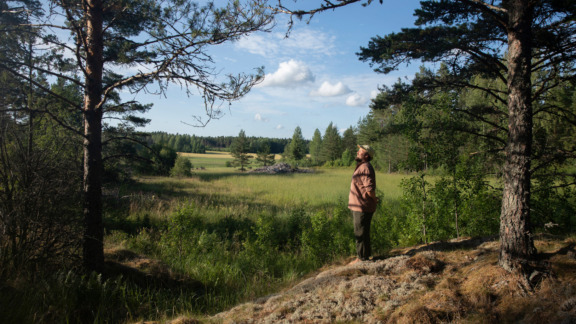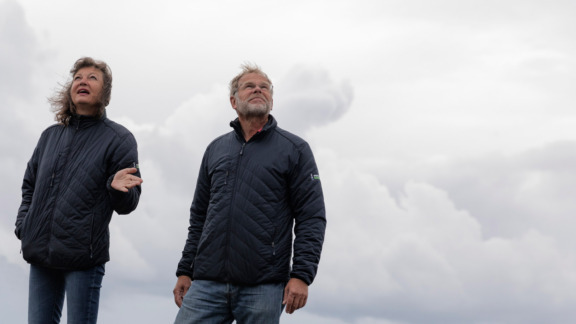A poem about farming
We are in Oravala village in Kouvola, South-Eastern Finland. Farmer Tommi Hasu, 35, has had a busy summer. So busy that he’s forgotten all about the interview.
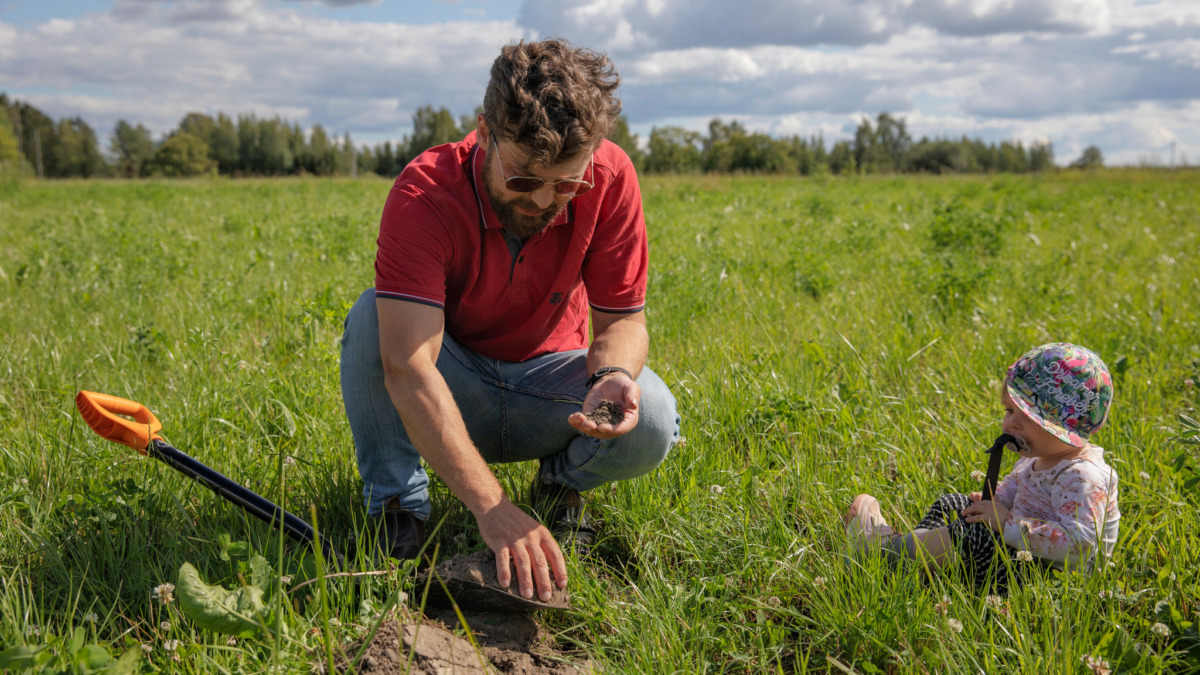
Text: Johannes Roviomaa
Photos: Touko Hujanen
The July day is warm and there’s plenty to do. He soon needs to pick up his one-year-old daughter, Lempi, from daycare. The phone rings at regular intervals. Yet a farmer, if anyone, is a master of adapting to changing conditions.
We sit down around Hasu’s kitchen table. Hasu lives with his two children in a light blue, wooden detached house surrounded by fields as far as the eye can see. From the yard, you can see the Hereford and Angus cattle grazing only a few hundred metres away, surrounded by a kilometres-long electric fence. Four hundred metres away lies the River Kymijoki, the old national border.
The parish records show that the Hasu family has been cultivating land in the same place since the 1500s.
In 1579, Tommi Hasu’s great-great-great-great-great-great-great-great-great-great-great-great-great-great-great-great-grandfather, Tuomas Pekanpoika Hasu, bought one-sixth of Pilkanmaa, which is now part of Kouvola.
The Hasu pedigree states that he owned about forty cows in 1566. At that time, Finland was part of the Kingdom of Sweden, and was ruled by the House of Vaasa. Stepbrothers Eric XIV and John III engaged in a bloody power struggle. Finns couldn’t read back then, but they might have heard that, according to the Polish astronomer Nicolaus Copernicus, the Earth revolves around the Sun – and not the other way around. Since then, the Earth has revolved around the sun another five hundred times. The human population has grown from five hundred million to eight billion. And the number of mouths to feed is growing every day.
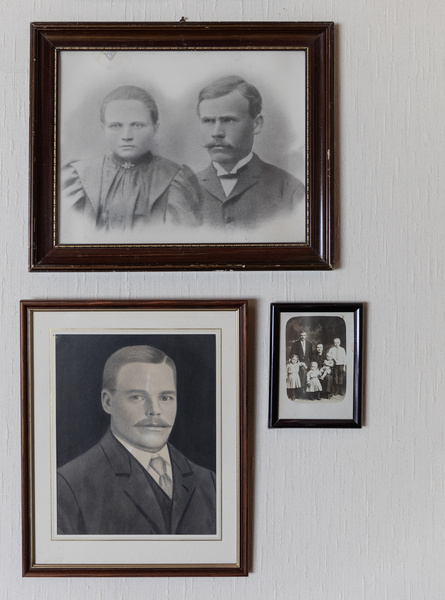
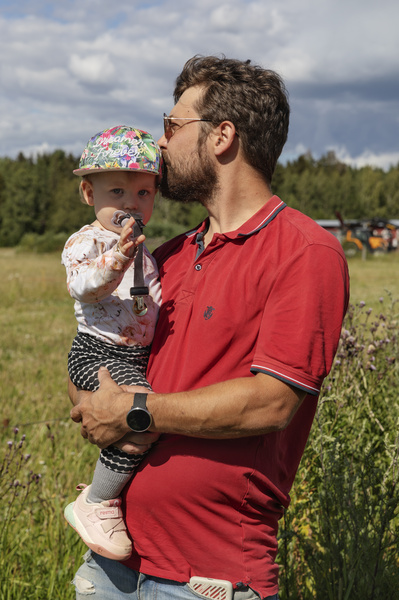
Yet the fundamental concept of agriculture has not changed in half a millennium. Farmers make food from land, air, and water. At the mercy of the weather and climate, they sow, await growth, and finally reap the harvest.
Agriculture provides 90 per cent of the food for the world’s population. Climate change is affecting agriculture faster than scientists had expected.
Tommi Hasu is the farm’s seventeenth farmer. Including leased fields, the family currently cultivates 620 hectares of land. That’s over ten times more than the average Finnish farm.
However, Hasu doesn’t feel at all burdened by his family history.
“Our family has a long history, but it will come to an end at some point. I don’t want either myself or my children to feel pressured. They can decide what they want to do with their lives,” says Hasu.
The farm has been growing rapidly over the past ten years. Some of the neighbouring farms have closed down, and the Hasu family has bought them up. This year alone, the farm has increased in size by 150 hectares. “However, the fields I purchased were in poor condition,” says Hasu. To remedy this, he has built drainage, spread nutrient fibre and cow manure, and introduced crop rotation. A great deal of effort has gone into changing these fields for the better.
”It takes ten years for soil health to improve when you focus on the right things. We’ve now been getting good yields from our harvests.”
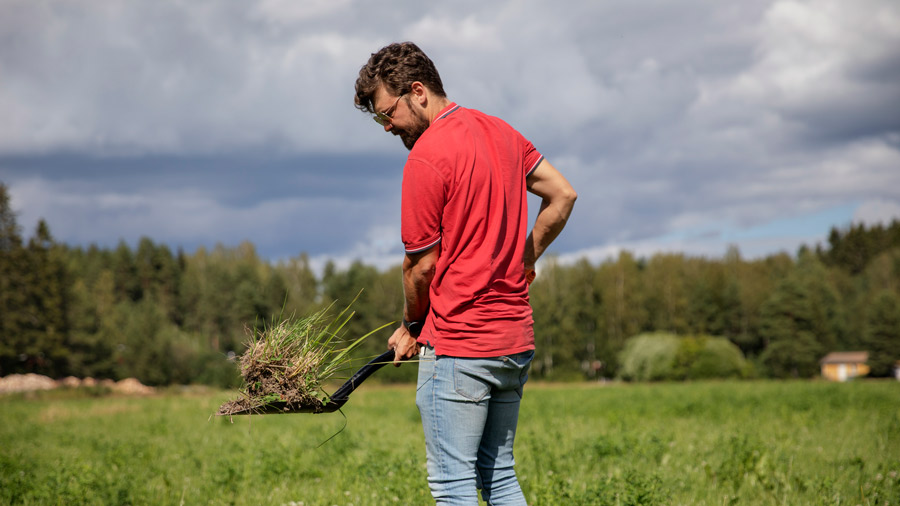
Hasu says that he wants to be the best farmer in Kymenlaakso.
The farm’s main products are gluten-free organic oats and beef cattle. He also grows peas, rapeseed, and grass in his fields. The farm is home to about 250 cows, 130 of which are suckler cows. Depending on the season, Hasu will focus on crop cultivation on weekdays and animal husbandry on weekends.
Tommi Hasu started running the farm with his father after graduating as an agrologist in 2012. He took on sole responsibility for the farm in 2017. Although his father, Tuomo Hasu, is officially retired, he’s still involved in the daily running of the farm.
Their fields have been organic since 1996.
“My father has been telling me about soil crumb structure, nitrogen-fixing plants, and crop rotation since I was a little boy.”
This is why Hasu finds it extraordinary that sustainable farming is only now becoming mainstream.
“My father’s way of thinking isn’t radical, but it is forward-looking and reacts to changing circumstances.”
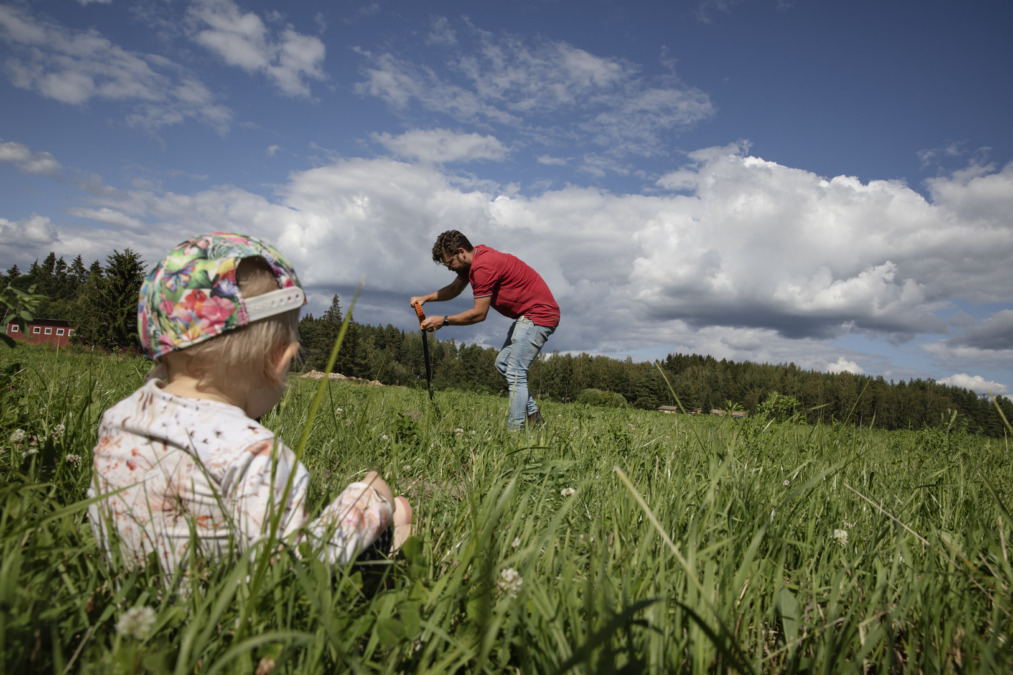
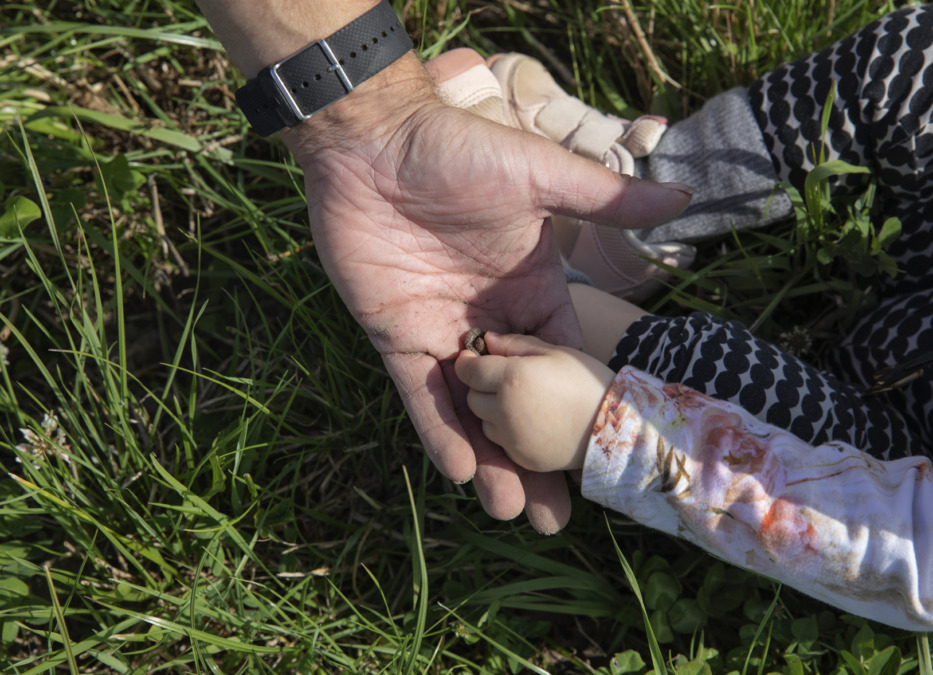
, food prices decreased considerably due to the use of nitrogen fertilisers in particular. However, this era of artificial fertilisers has impoverished the soil, as the worms and microbes that produce new mulch have no longer been able to feed on plant residues and each other’s droppings. The soil organisms that have been deprived of their living space by artificial fertilisers bind carbon and release nutrients from plant residues so they can be used by crop roots.
As the number of microbes decreases, the fertility and humus content of the soil suffers.
The use of industrial fertilisers has also led the relatively shallow Baltic Sea to become one of the most polluted and eutrophicated seas in the world. Most of the fields used for crop cultivation are located along rivers or in coastal catchment areas with few lakes. Nutrients – and especially nitrogen and phosphorus – leach into the sea from these fields.
Hasu says that the crumb structure of clay-rich soils in Southern Finland must be improved, so that they can better bind nutrients rather than releasing them into the Baltic Sea with stormwater.
“You should minimise tillage, grow a variety of plants and quite simply cultivate more carefully.”
“Doing this would also make fields more resilient to extreme weather phenomena and lead to higher-yield harvests,” says Hasu. Unhealthy soil cannot withstand long periods of drought or heavy rainfall, which will increase as climate change intensifies.
“Luckily, nutrients are so valuable these days that they’re no longer being used so casually.”
Exactly what makes farming sustainable will vary greatly from region to region.
Kymenlaakso has clay-rich fields. This means that particular attention must be paid to their soil structure. Adding organic matter and using grasslands in crop rotation will help to ensure reliable harvests. “We farm in the old way, but using new technology. Meat is a byproduct and manure is the main product and the reason why we employ crop rotation.”
This year’s harvest has required exceptionally high production outlays. The impacts of the Ukraine war have been reflected in agriculture in many ways. The past summer has also been dry and the autumn very wet. The price of cereals has fallen. This is, therefore, a year of multiple crises.
“Humanity does not learn from its mistakes. We should make better use of side streams and the circular economy.” Although Hasu’s fields are organic, his agricultural machinery and grain-drying plant consume 80,000 litres of fuel per year.
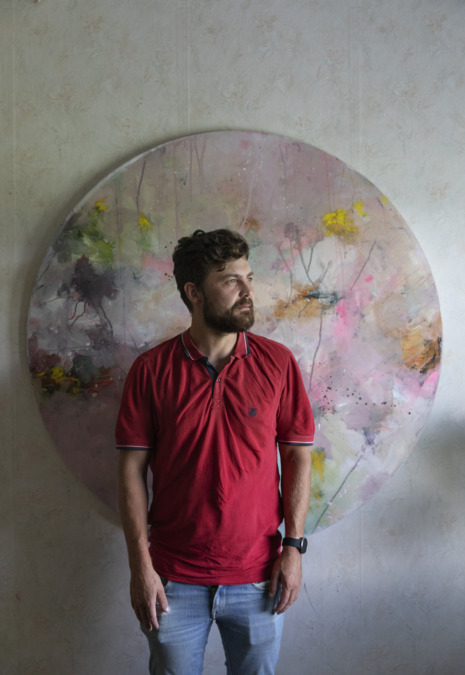
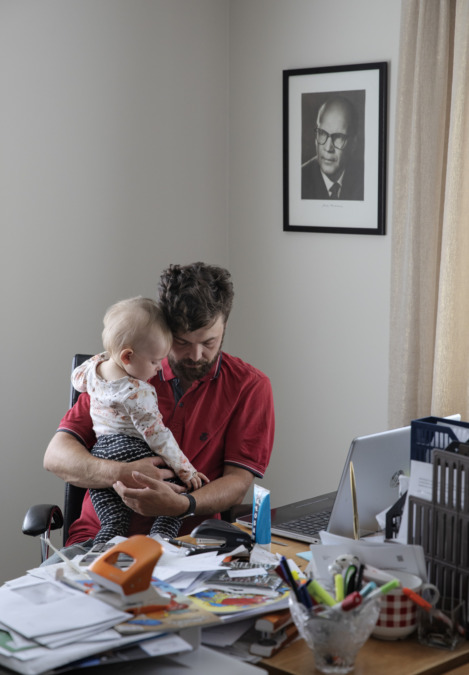
Hasu is an outspoken farmer. He is disappointed that people in Finland are not prepared to engage in honest debate about the environmental issues surrounding agriculture.
“Our current farming methods are destroying the environment. Food production is, in a manner of speaking, “the original source of fast fashion” – we produce as much food as possible, as cheaply as possible and as quickly as possible. It’s an unsustainable equation.”
Hasu wonders why Finns have accepted the fact that their food is often of poor nutritional quality. He thinks that one of the reasons may be that people have become disconnected from the food system.
“This is why farmers are also hard pressed and cannot improve their living environment.”
Hasu says that one key means of promoting sustainability is to increase dialogue between farmers.
Public debate on agriculture is often highly polarised. It’s as if different interest groups want to own the countryside.
“Farmers are a bit more sensitive than the old guard. Some of them feel forgotten for one reason or another.”
Hasu hopes that discussions will also be held with ordinary farmers.
“Most farmers follow in the footsteps of people they can relate to. If the forerunners are overly smart, farmers won’t be able to relate to the changes. Who wants an outsider coming to tell you that you’ve failed in life.”
Hasu cites the field days that he organises in Kymenlaakso as a positive example. Most of the participants travel quite a distance to learn and share hints and tips. “Field days are a good way to freely discuss your own experiences and share your successes and failures.”
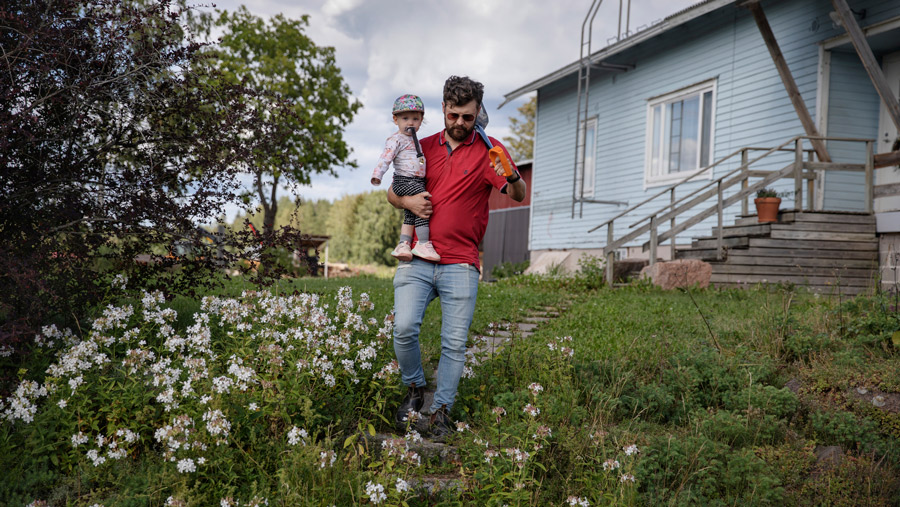
Hasu strides onto a two-hectare field plot where he grows a mixture of clover, white clover, red clover, timothy, and ryegrass as silage grass. He has a spade over one shoulder and his daughter in his arms. Moments earlier, he was picking her up from daycare.
Hasu has a number of “favourite plots” whose success he follows very closely.
“If those plots don’t produce high yields then I know we’ll be in deep shit. Because we won’t be getting them from anywhere else either,” he says with a grin.
Every now and again the plots are “excellent on paper” – their phosphorus and nitrogen values are good, for instance – but unpredictable weather can quickly turn things upside down.
“Sometimes an insanely good plot of organic oats will be ruined by heavy rain. Greed has a shitty ending.”
Hasu does a few “spot checks”, that is, he digs a hole in the ground with his shovel and lifts out a handful of soil to visually assess its crumb structure.
“This is surprisingly porous. An excellent structure – mulchy with a good root mass.”
An earthworm is discovered in the very first handful. He hands it to his daughter to examine.
Earthworms are also found at the next excavation site a few metres away. A sign of good soil.
Hasu says that he checks the soil health too rarely.
Soil samples have been taken from the Carbon Action soil plot twice: this year and at the beginning of the project in 2018–2019. Hasu took the samples himself and posted them to the Mikkeli laboratory for analysis. The samples show how fertile and nutrient-rich the soil is.
In the Carbon Action project, researchers, farmers, and companies work together to promote carbon sequestration – and to improve both soil health and biodiversity. Fighting climate change is another of the project’s goals.
Hasu has been involved in the project from the outset. He now has an 18-hectare pilot plot in which he grows a mixture of six varieties of grass.
“I’m curious about the environment. I’ve always been interested in learning about how to improve soil health.”
Hasu has noticed that skilled farmers usually obtain good harvests regardless of the weather and other conditions.
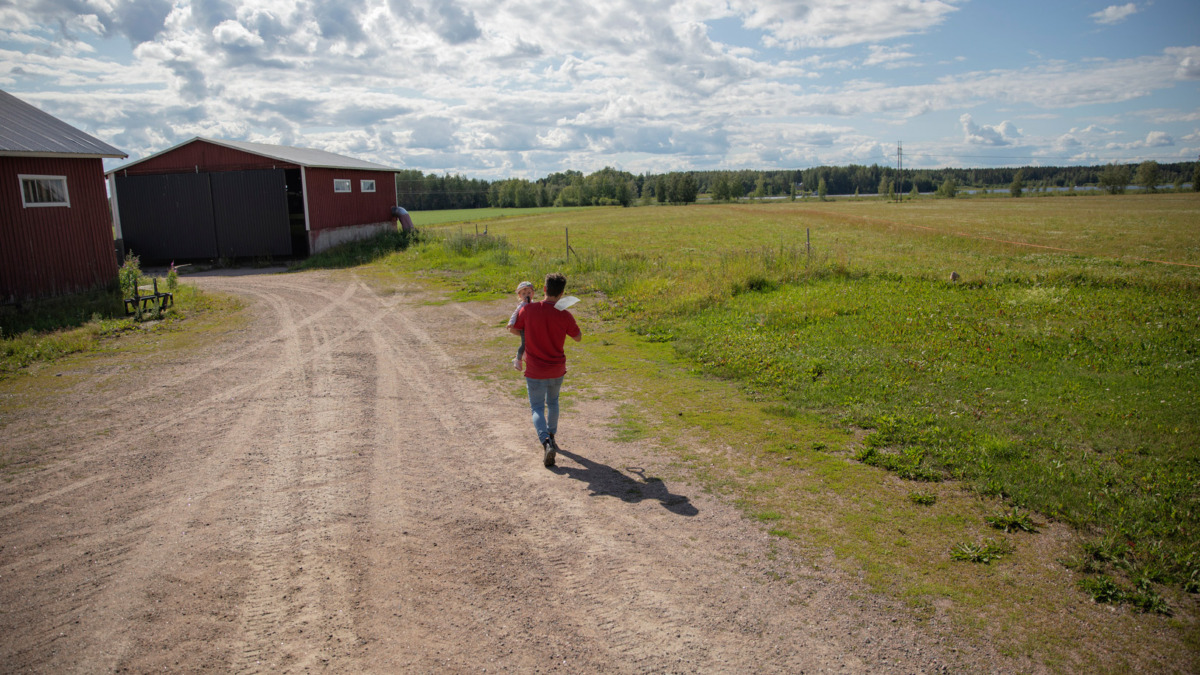
What makes a good farmer?
“You have to be interested in cultivating the land. It’s meticulous work, and you need to adapt to working with nature. You have to make the right decisions within a certain timeframe. How many tonnes of cereals are produced per hectare is not the most important thing.”
Hasu says that he all too frequently encounters farmers who make hasty decisions.
No one can make exact predictions of the future food production in Finland. However, climate change and biodiversity loss will place limitations on what kind of food can even be produced in Finland – and how. The future is clouded.
The conditions governing food production are changing faster than ever. Professor of Agroecology Juha Helenius has said “There’s great concern over the rising sea levels caused by climate change, but climate change is having faster – and in terms of human wellbeing – more serious impacts on food production.”
People should eat a more plant-based diet. There is no way that all eight billion people in the world can eat as many animal products as are currently eaten in the West.
Sustainable farming practices are also helping to improve the state of the Baltic Sea.
Hasu says that it’s up to farmers to leave the land in a sustainable condition for future generations. “We should look the future of agriculture straight in the eye. The issues surrounding agriculture aren’t going away. We’re continually shifting the burden to the future and future generations.”
“We should look the future of agriculture straight in the eye. The issues surrounding agriculture aren’t going away. We’re continually shifting the burden to the future and future generations.”
Georgics is the magnum opus of the Latin poet Virgil – a poem about farming that was written between 37 and 29 bce. The first section deals with arable farming. The third section focuses on livestock farming.
Virgil hoped to make people understand the beauty and diversity of plants and animals, and to value the hard yet rewarding work undertaken by the peasantry.
Johannes Roviomaa (b. 1991) is a journalist, screenwriter, and visiting researcher at the Arctic Centre. He specialises in climate change, the Arctic region, and the food system. Along with his team, Roviomaa has received both the State Prize for Popularization of Science (2018) and the Kanava Award (2017).
Touko Hujanen is a photojournalist who specialises in reportage. He has received several awards, such as Photojournalist of the Year (2019, 2018), Press Photographer of the Year (2011), and the Discovery Award (2020).
